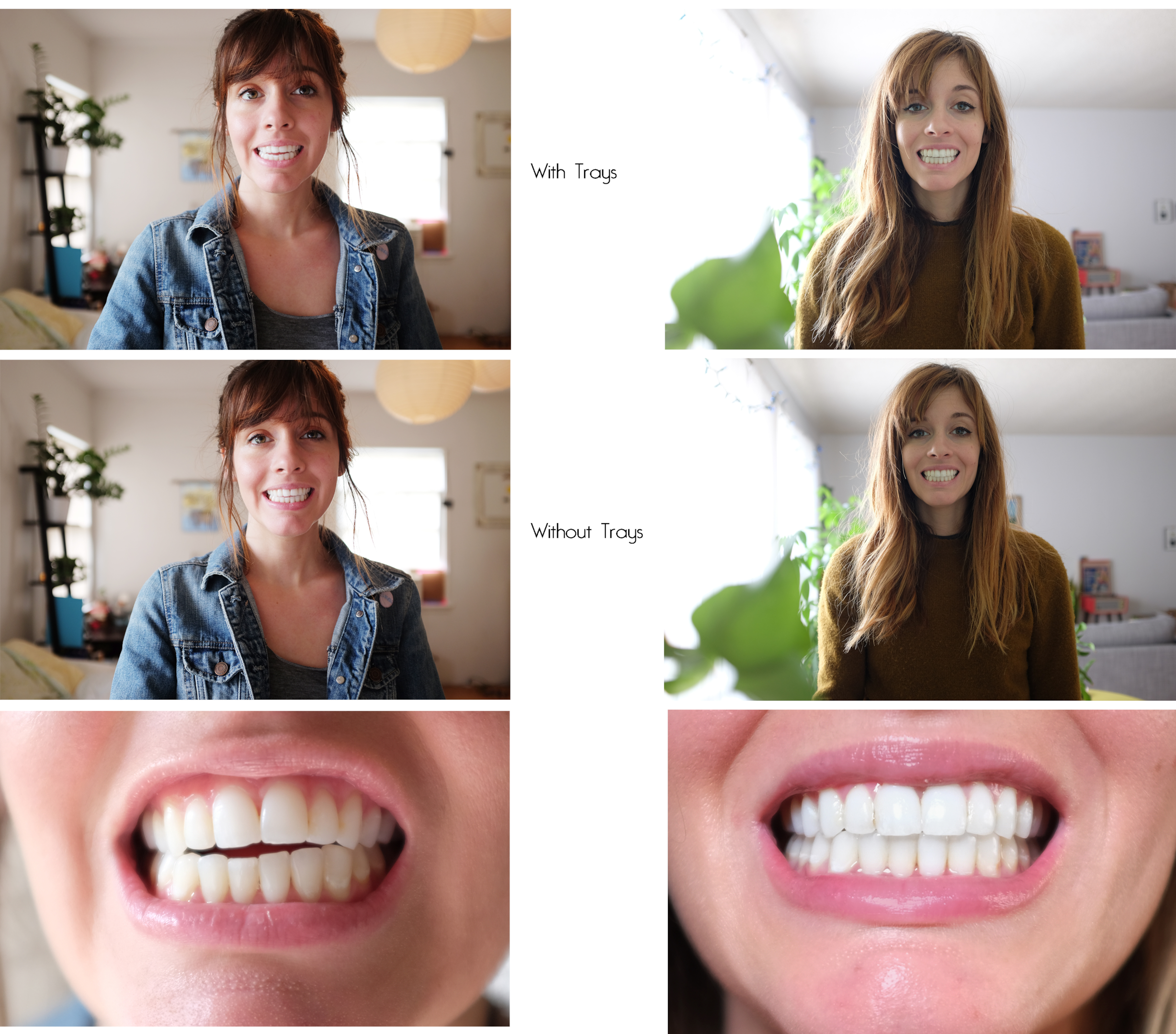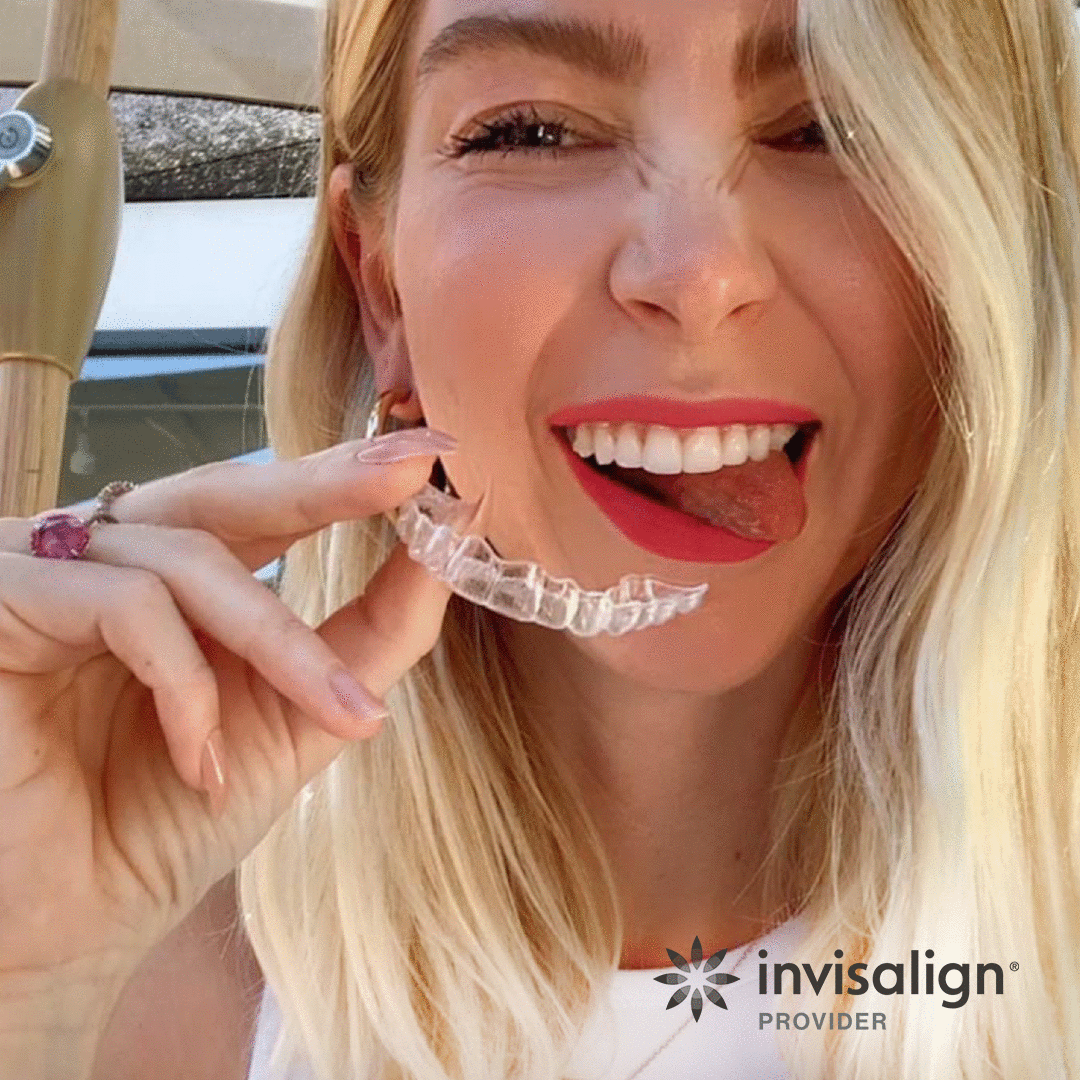Explore whether Invisalign is the appropriate option for enhancing your smile in this guide. Learn how it provides a discreet and comfortable solution to teeth straightening, stands up against traditional braces, and accommodates your financial plan and way of life. Acquire the knowledge necessary to make a well-informed choice regarding teeth alignment without experiencing any push towards sales.
Key Takeaways
-
Invisalign aligners offer a comfortable, custom-fit, and nearly invisible solution for teeth straightening, with a personalized treatment plan including regular orthodontist check-ups and switching aligners every two weeks.
-
Maintaining good oral hygiene is easier with Invisalign, contributing to healthier gums and reducing gum disease risks, as the aligners are removable for brushing, flossing, and cleaning with dedicated solutions.
-
The cost of Invisalign treatment varies and can be supported by dental insurance plans and financing options; treatment spans average 9 to 18 months, with success dependent on patient compliance with the recommended wearing schedule.
Understanding Invisalign: The Premier Clear Aligner System

Invisalign, a prominent name in the realm of teeth straighteners, provides a sophisticated approach to correcting teeth alignment. This method abandons the bothersome appearance and discomfort associated with traditional braces and lingual braces in favor of sleek, tailor-made aligners that proficiently alter the arrangement of teeth.
Favored by many patients seeking orthodontic care, Invisalign aligners deliver an optimal mix of efficient treatment outcomes alongside aesthetic advantages.

What Sets Invisalign Apart?
Invisalign aligners are tailored to the individual’s gum line, providing a personalized fit that maximizes both comfort and visual attractiveness. This custom fitting is complemented by their unique SmartTrak technology, which streamlines the process of putting in and taking out the aligners for an improved user experience.
Patients opting for Invisalign can receive treatment discreetly due to the clear medical-grade plastic used in these nearly undetectable aligners. Such inconspicuousness during treatment gives them an edge over traditional metal braces when it comes to maintaining an aesthetic appearance.
The Invisalign Treatment Process
Embarking on the path to a perfect smile using Invisalign starts when you consult with providers trained in this method. They evaluate your teeth and talk about what you hope to achieve for your smile. A tailor-made treatment plan is crafted from x-rays, photographs, and impressions of your teeth that direct how each tooth should move throughout the duration of the treatment.
Throughout their journey, patients are equipped with numerous sets of bespoke aligners which must be worn no less than 22 hours daily and replaced roughly every two weeks. To ensure the aligners’ success and make any needed alterations, regular six-week consultations with an orthodontist are part of the process.
Achieving Beautiful Cosmetics with Invisalign
The capability of Invisalign treatment to reposition and straighten teeth is enhanced by its precision. Aligners meticulously shift the position of your teeth, each one designed to move them up to 0.2 mm closer together, effectively narrowing any spaces and ensuring a neatly arranged set.
There’s an added aesthetic benefit that remains apparent throughout the course of using these invisible aligners and persists following their use, contributing greatly to the allure associated with Invisalign’s method for straightening teeth.

Health Benefits Beyond Aesthetics
Invisalign, renowned for its aesthetic advantages, also provides significant health benefits. The ease of cleaning teeth with these aligners gives them a distinct advantage over the fixed traditional braces.
Removable aligners facilitate adherence to good oral hygiene practices like regular brushing and flossing. This is crucial in enhancing oral health and warding off gum disease.
Impact on Gum Health
The use of Invisalign’s removable aligners greatly assists in maintaining the health of your gums. These aligners allow for a more effective cleaning process, helping to avoid plaque accumulation near the gums. Due to the ability to completely remove these aligners, there is a diminished likelihood of plaque development and subsequently gum disease.
Invisalign promotes improved oral hygiene routines which substantially lessen the chances of developing gum disease. The design of their teeth-aligning method ensures that both teeth and gums can be kept clean with greater ease.
Preventing Gum Disease with Proper Hygiene
It is essential to maintain excellent dental cleanliness while undergoing Invisalign treatment to avert gum disease. The regimen should consist of:
-
Twice-daily tooth brushing
-
Routine flossing
Before placing the aligners back in your mouth, it’s critical to brush and floss to hinder bacteria from getting confined against your gums.
To keep up with proper oral hygiene, clean the daily aligners using a soft-bristled toothbrush coupled with either clear, unscented mild soap or special Invisalign cleaning crystals.
Invisalign for Different Orthodontic Issues

Invisalign aligners offer a customizable and adaptable approach to tackle an extensive array of orthodontic problems, effectively dealing with everything from mild adjustments to intricate scenarios instead of adhering to a generic one-size-fits-all strategy. The types of issues that can be addressed by Invisalign include:
-
Narrowing the spaces between teeth
-
Rectifying crowded teeth
-
Amending overbites and underbites
-
Aligning misaligned teeth
-
Correcting crossbites
Utilizing Invisalign enables you to obtain the smile you’ve been longing for, ensuring your treatment leads to perfectly straightened teeth.
From Mild Adjustments to More Complex Issues
Invisalign is capable of addressing various orthodontic issues, specifically those concerning misaligned teeth such as crowded teeth, gaps, overbite, underbite, crossbite and open bite.
The SmartTrack material used in Invisalign provides precise control for the movement of teeth. Although intricate orthodontic problems could necessitate combining Invisalign with additional specialized dental treatments—possibly prolonging the overall treatment time compared to more straightforward cases.
Customized Treatment Plans for Adults and Teens
Invisalign treatment provides personalized plans catered to the distinct orthodontic requirements of both teens and adults. Teens, particularly those with spaces between their teeth, might opt for Invisalign due to its discreet nature which can boost self-confidence while undergoing teeth straightening supervised by a dentist or an orthodontist.
Meanwhile, when it comes to adults seeking teeth straightening, they may find greater advantages in combining the use of retainers alongside their Invisalign treatment.
Cost and Insurance Considerations for Invisalign
In the United States, Invisalign treatment can cost anywhere between $2,000 and $10,000. Fortunately, many dental insurance plans often provide coverage for Invisalign just as they would for traditional braces, potentially defraying close to 25% of the total treatment expense.
Exploring Financing Options and Payment Plans
Orthodontic practices frequently provide monthly payment plans to make Invisalign treatment more accessible, which when paired with down payments and insurance coverage options, can suit a range of patient budgets apart from relying solely on insurance.
Patients have the option to reduce their out-of-pocket costs for Invisalign treatment by utilizing pre-tax funds from Flexible Spending Accounts (FSA) or Health Savings Accounts (HSA), capitalizing on these savings opportunities.
Navigating Dental Insurance Plans
Grasping the nuances of dental insurance plans can be intricate, especially when it comes to coverage for orthodontic treatment like Invisalign. Depending on your plan, you might receive a percentage towards the cost or a certain dollar amount dedicated to this treatment. To fully comprehend the extent of your dental insurance benefits related to Invisalign, it’s essential to review the orthodontic treatment provisions in your benefit package or reach out directly to your insurance provider for precise information.
The Duration and Commitment of Invisalign Therapy

The length of Invisalign treatment can vary greatly, typically ranging from a brief period of about four months to almost two years, with most people experiencing an average timeframe between nine and eighteen months. Success in this treatment is heavily dependent on the patient’s dedication to consistently wearing the aligners for at least 22 hours per day. For those prescribed a nighttime regimen, it’s essential that they wear their aligners between eight and ten hours each night to ensure the effectiveness of the treatment.
Expected Treatment Times with Invisalign
Typically, the duration of Invisalign treatment ranges from 9 to 18 months, depending on the complexity involved. For example, addressing issues related to dental crowding can often take between 12 and 18 months based on how severe the case is.

Patient Compliance and Success Rates
Adhering to the prescribed usage of aligners is essential for achieving desired results. Noncompliance may disrupt tooth movement, leading to a prolonged treatment duration and suboptimal results. To enhance adherence, patients should:
-
Set reminders
-
Incorporate aligner maintenance into their daily habits
-
Keep consistent dental appointments
-
Adhere strictly to instructions from their dentist
It’s important to note that Invisalign aligners ought to be taken out only for up to two hours per day specifically for meals, consuming drinks other than water, and maintaining oral hygiene.
Comparing Invisalign to Other Brands of Clear Aligners

Invisalign sets itself apart from other brands of clear aligners, like Smile Direct Club and Byte, with its exceptional quality, proven effectiveness, and professional endorsements. This preference for Invisalign’s unique characteristics makes it a top choice among those seeking clear aligner options to enhance their smile.
Invisalign vs. Other Invisible Teeth Aligners
Invisalign treatment boasts a number of benefits that distinguish it from other brands of aligners:
-
This treatment utilizes an exclusive thermoplastic material known as SmartTrack, designed to enhance the comfort and fit for the user.
-
With its competitors, Invisalign is recognized for yielding more reliable results in terms of tooth movement.
-
The process includes face-to-face dental visits, ensuring tailored care during the course of treatment.
It should be considered though that alternatives like Smile Direct Club may present cost advantages. Such options often promote a predominantly remote experience without requiring regular appointments throughout their treatment process.
User Experiences and Professional Endorsements
Invisalign has earned favorable reviews for its ease of use and attractive design, making it a popular choice among individuals who value aesthetics. Its discreetness and practicality make it particularly appealing to professionals with demanding schedules. With a quarter-century in the marketplace and status as a Diamond provider, Invisalign’s reputation for reliability and its esteemed standing within the orthodontic field are well established.
Maintaining Your Smile Post-Invisalign

Maintaining your perfect smile after attaining it with Invisalign is crucial, which requires the use of retainers for between 20 to 22 hours daily during the early maintenance phase.
The Role of Retainers After Aligners
Retainers are essential for preserving the outcome of Invisalign treatment, keeping teeth straight and properly aligned. Based on the specific condition of a person’s teeth, a dentist will advise on the appropriate retainer model to use. Initially, these retainers should be worn continuously during day and night, but can eventually be adjusted to nighttime usage in order to maintain alignment.
It is important to handle retainers with care to avoid any damage. When they’re not being worn, place them securely in their provided case. To keep them clean and in good shape, gently cleanse with lukewarm water using a soft-bristled brush. Over time, as they experience wear and tear, it will become necessary to replace them.
Long-Term Care for Your Straightened Teeth
Maintaining straightened teeth requires the cessation of detrimental habits, safeguarding your teeth with protective gear during athletic activities, and keeping up with rigorous oral cleanliness. It’s crucial to steer clear of consuming tough or sticky foods that might inflict harm on your new smile, as well as ensuring you wear a mouthguard while engaged in sports to shield your aligned teeth from potential trauma.
For those who have undergone alignment treatments for their smile, it is imperative to clean retainers and aligners regularly each day to inhibit bacterial proliferation and unpleasant smells which could threaten the health of gums. The use of a homemade solution composed of lukewarm water mixed with distilled white vinegar comes highly recommended for cleaning purposes. This concoction has proven effective at eradicating both tartar and plaque accumulations on retainers and aligners.

Summary
Invisalign has revolutionized teeth straightening with its clear, comfortable aligners. Offering a wide range of benefits from aesthetics to health, it caters to different orthodontic issues with personalized treatment plans. Although costs may vary, financial options are available to help manage payments. Most importantly, patient compliance and long-term care are crucial in ensuring successful outcomes and maintaining that perfect smile post-treatment. Invisalign stands as a testament to how orthodontic treatment has evolved, making teeth straightening an easier and more enjoyable journey.
Frequently Asked Questions
What is the downside of Invisalign?
One disadvantage of Invisalign is the inconvenience for those who often snack or drink beverages other than water, since aligners must be taken out to prevent food particles from becoming trapped and causing potential oral health problems.

Is Invisalign better than braces?
Typically, Invisalign is an optimal solution for individuals with mild to moderately misaligned teeth. Conversely, traditional braces are often recommended for those facing severe orthodontic problems or who seek a more cost-effective treatment.
It’s important to assess your particular dental requirements and engage in consultation with an orthodontist who can help ascertain the most suitable option tailored to your situation.
Is Invisalign really worth it?
Indeed, Invisalign proves to be a valuable option since it is more discreet, entails a reduced treatment duration, imposes no limitations on diet, and simplifies maintaining oral cleanliness while achieving outcomes comparable to those of traditional braces.
Why is Invisalign more money?
The treatment involving Invisalign aligners incurs a cost of $5,000, which can be attributed to the elevated laboratory fees associated with their production. These aligners are fashioned using sophisticated materials and technology.
As a result, this method of orthodontic correction is Pricier than conventional orthodontic techniques.
What is the best option for straightening teeth?
Aligners are recognized for their speed and efficiency as a method for teeth straightening, boasting an average treatment duration of just four to eight months, compared to traditional braces.
They provide enhanced oral hygiene benefits throughout the treatment process.

